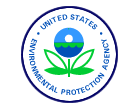
|
Low Temperature Thermal Treatment (LTł) Technology
Roy F. Weston, Inc.
Application Analysis Report
This document is available in the Adobe Acrobat PDF Format.
Click here for
information about Portable Document File (PDF) Formats.
or
Click here
to directly download the Acrobat Reader.
(To view the PDF, it is recommended
that you use the latest version of Acrobat Reader.)
Low Temperature Thermal Treatment System,
Roy F. Weston, Inc. (2,259K)
U.S. EPA Superfund Innovative Technology Evaluation (SITE) Program
Low Temperature Thermal Treatment System
Roy F. Weston, Inc.
ABSTRACT
Roy F. Weston, Inc., designed a transportable,
low temperature thermal treatment (LTł®) system that thermally desorbs organic
compounds from contaminated soil without heating the soil to combustion temperatures.
The key feature of the system are the intermeshed hollow screw conveyors, which
simultaneously heat, mix, and convey the contaminated soil through the thermal
processor. Bench-, pilot-, and full-scale LTł® systems have treated soil and
sludge contaminated with the following wastes: coal tar, drill cuttings (oil-based
mud), No. 2 diesel fuel, JP-4 jet fuel, leaded and unleaded gasoline, petroleum
hydrocarbons, halogenated and nonhalogenated solvents, VOCs, SVOCs, polynuclear
aromatic hydrocarbons, polychlorinated biphenyls, pesticides, herbicides, dioxins,
and furans. The LTł® thermal processor consists of two jacketed troughs, one
above the other. Each trough houses four intermeshed, hollow screw conveyors.
Contaminated soil or sludge is fed into the thermal processor, where hot oil
circulating through the troughs and screws heats the soil to 400 to 500 EF
driving off contaminants. Treated soil is discharged into a conditioner to cool
the soil and minimize dust emissions. Desorption gases pass through a baghouse,
a series of condensers, and a carbon adsorption unit before release to the atmosphere.
The condensed liquid streams are treated in a three-phase oil-water separator
to remove organic phases for disposal. The water phase is treated in a carbon
adsorption system prior to discharge. In November and December 1991, the LTł®
system was demonstrated under the SITE Program as part of a proof-of-process
test for full-scale remediation of the Anderson Development Company (ADC) Superfund
site in Adrian, Michigan. The system was tested on lagoon sludge from the ADC
site. This sludge was contaminated with a variety of VOCs and SVOCs. Toluene
and PCE were reduced to below detection limits (30 ug/kg) in the treated sludge
from starting concentrations in the untreated sludge ranging from 690 to 25,000
ug/kg. Removal efficiencies for selected SVOCs reached as high as 97%.Treatment
cost per ton of similarly contaminated waste material was estimated to range
from $373 to $725.
Back to SITE Home Page
Posted June 22, 1999
|

